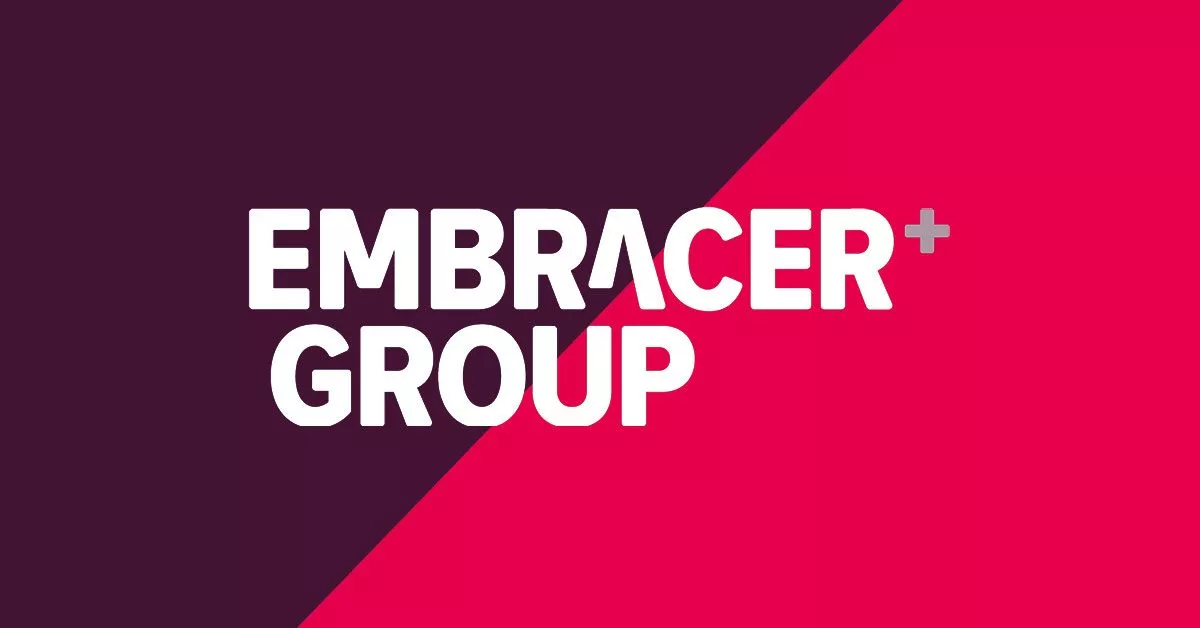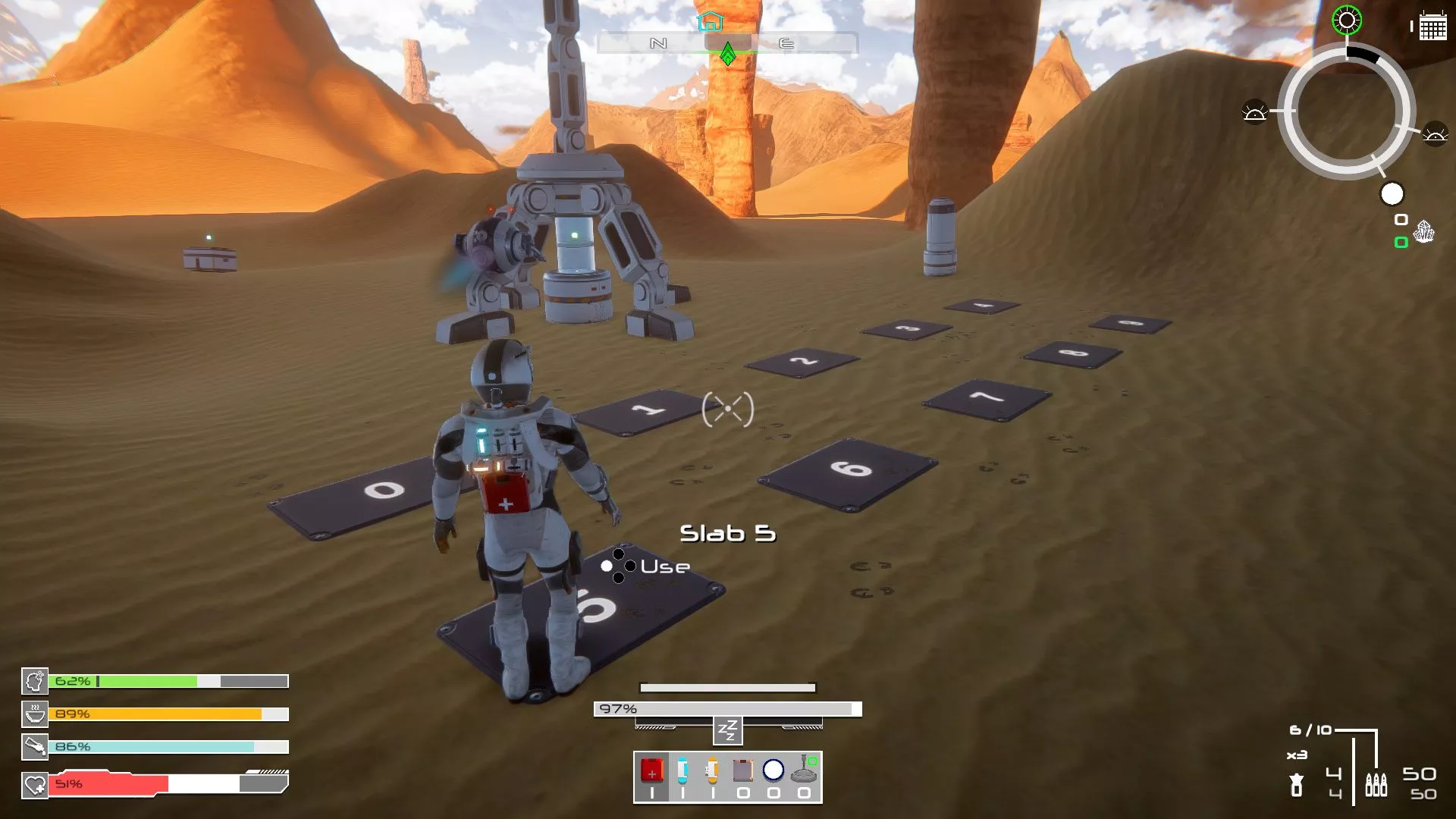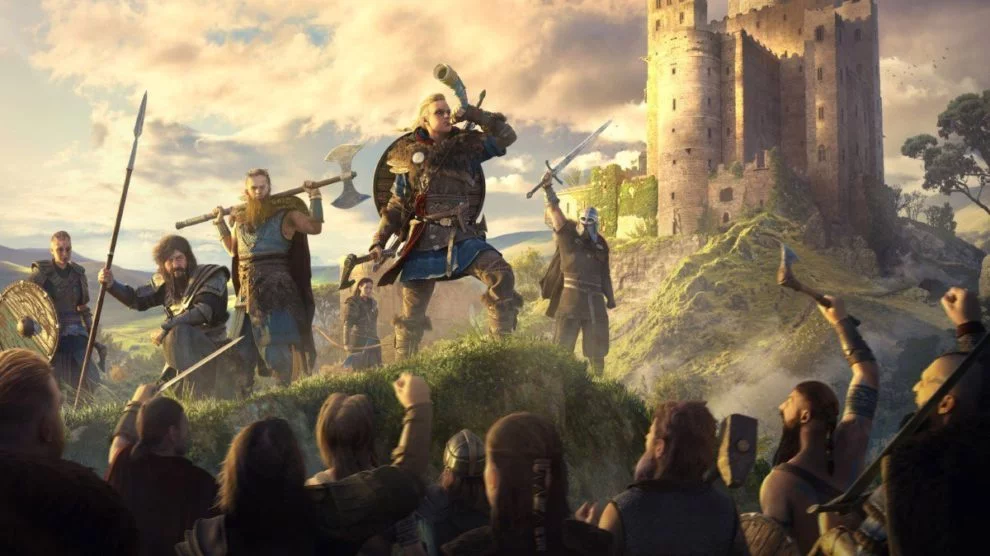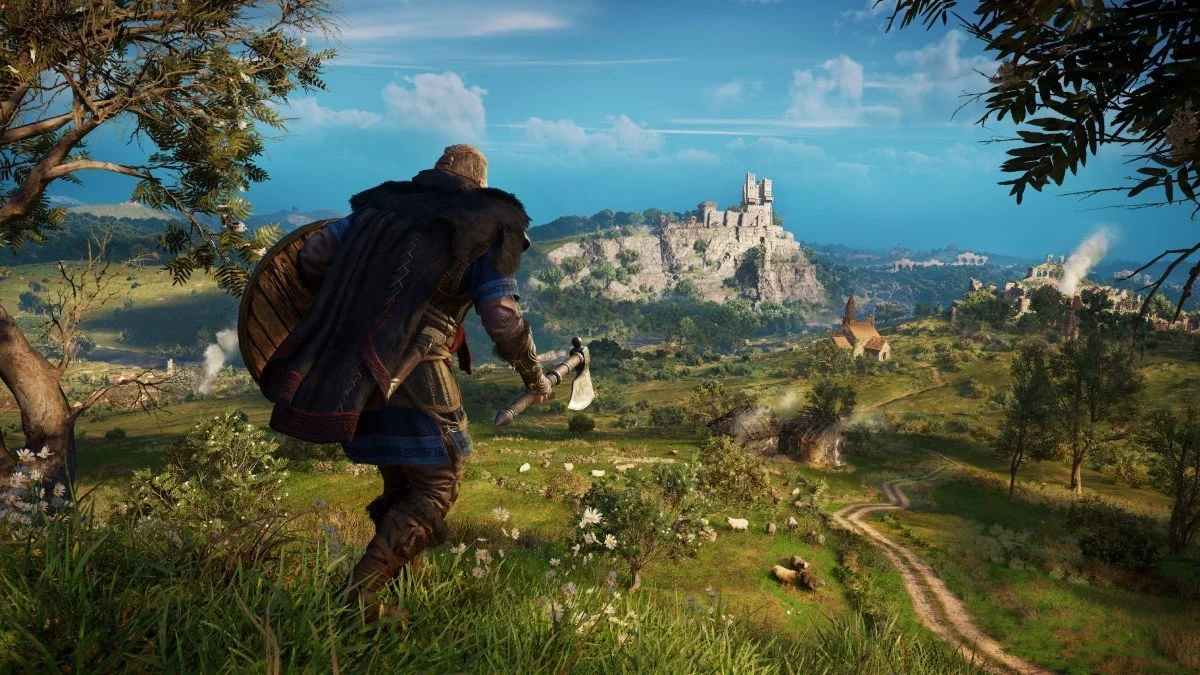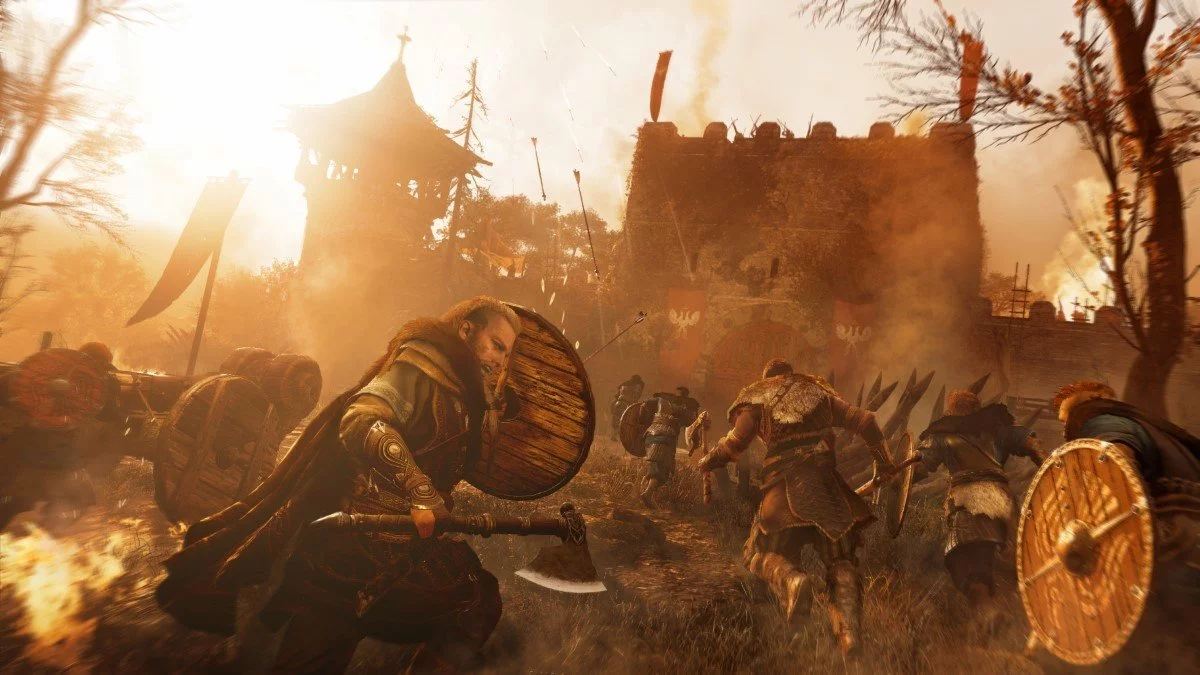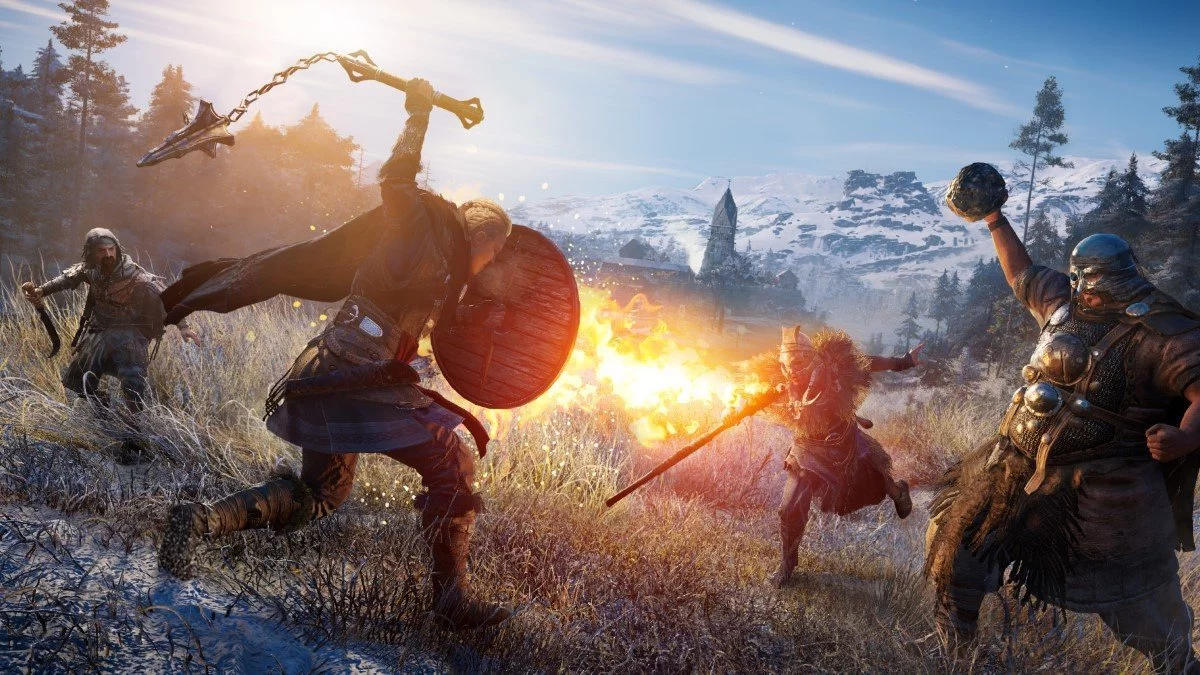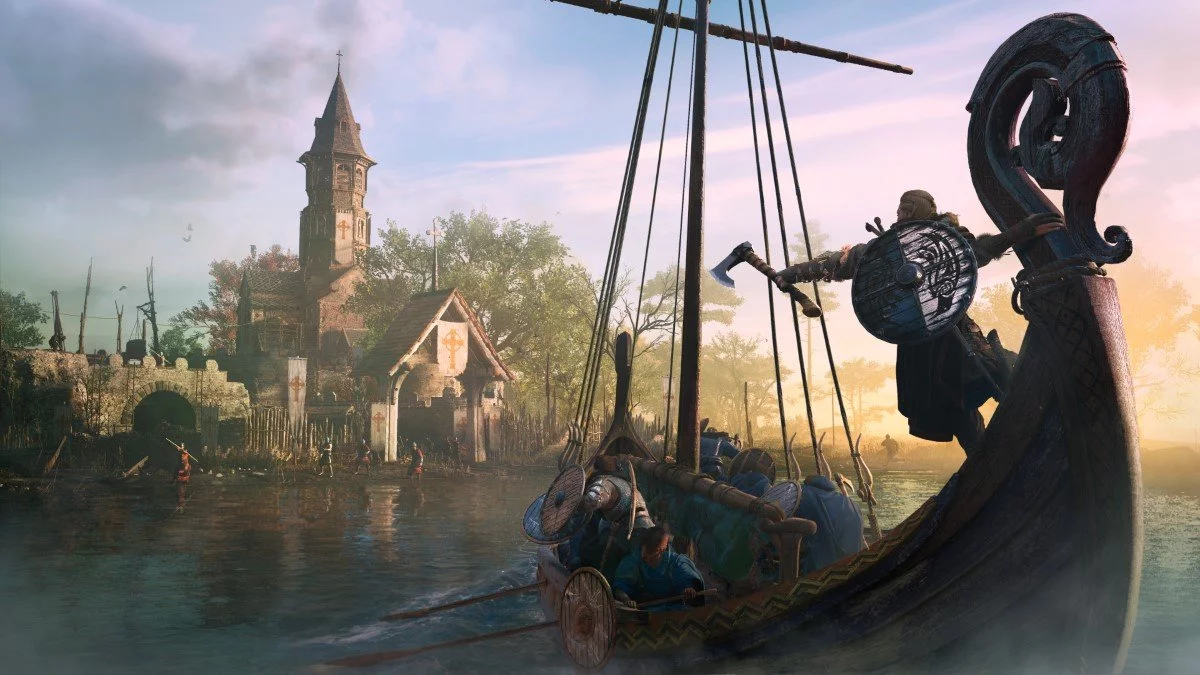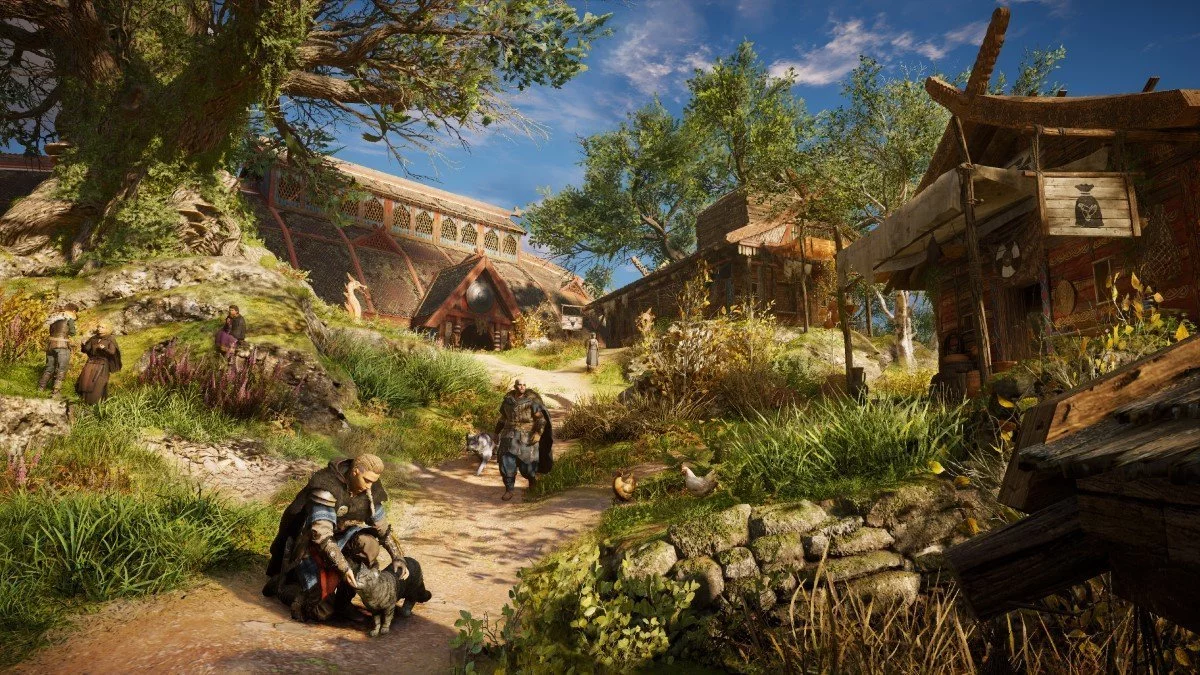When you think about it, the Viking Age is perfect fodder for Assassin’s Creed‘s particular brand of historical fiction. It’s got boats, it’s got bloodthirsty marauders, and it’s built from the ground up to take players basically anywhere the Atlantic Ocean can reach.
The decision to take us to the British Isles struck me as a little odd at first, but that too makes a lot of sense the more you swirl it around in your mind-grapes. The Viking Age itself is a tumultuous time for the land of Eng — the reason the Norse-loving invaders are able to get such a strong foothold in the country is because there isn’t any real centralised leadership.
Why not thrust the player into the task of setting up such a thing?
Enter Assassin’s Creed Valhalla (ACV). Or at least, I think. Our preview build dropped us into the middle of a storyline, with relationships established and goals set already, so I might have interpreted it incorrectly. Still, based on what I played, as Eivor your job is to make sure East Anglish King Oswald is placed on the throne — but not before you see him wed to a member of your clan.
Beyond that, I can’t say — not that I would — but it’s a great foundation for a story set in the first millennium. It feels very Crusader Kings, with a broken England as your backdrop and an entire island to explore. Or at least, I think. The World Map appears to show a hard border where Wales would begin, with lines that usually indicate an out-of-bounds area.
All of this is academic, of course. Well, academics might bristle at that — my understanding of British history comes entirely from Bernard Cornwell novels — but what I mean to say is that it’s set dressing. What matters is how it plays, and honestly, this might be the best AC in a long time.
The decision to grow the combat in Origins was probably the best thing Assassin’s Creed could have done, but even the team(s) at Ubisoft knew there was work left to be done. And Odyssey proved they knew where to put that effort — a greater emphasis on weapons encouraged players to fight in a more active manner. But by removing the shield, Odyssey inadvertently created one-note combat.
That’s not the case in Assassin’s Creed Valhalla. First of all — shields are back. Because they’re now a weapon to be balanced around, the rest of the combat in Valhalla feels more balanced as well.
That said, I wouldn’t use a shield — I didn’t, actually, for most of my playthrough. Valhalla introduces dual-wielding and it’s amazing. You can equip any one-handed weapon in your main and off hands and your fighting style will change accordingly. You can also, bizarrely, equip a two-handed weapon in your off-hand and punch everything, but you definitely shouldn’t do that.
By removing the shield and replacing it with a weapon, you create a fighting style that feels as active as Odyssey while still providing players with the option to slow things down when needed. This was a huge piece of the puzzle missing from Odyssey, and it’s fantastic that it’s back.
You can see the influence this pacing change has had on the rest of Valhalla, too. Instead of trying to force players down a path of high-paced combat, ACV provides a balanced opportunity for variety. You can push the pace with two small, quick weapons like the bearded axes. Or you could pack a big punch by comboing a main-hand flail with an off-hand axe.
The off-hand weapon is always available as a parry — the moment you hit the LB (L1) button, instead of instantly attacking with it, you’ll perform a parry move and then attack. So the shield is better left to players who don’t want to worry about parry timing — or for those moments when you’re raiding a village and getting peppered with arrows.
Another huge change is the fact that you don’t regenerate health in ACV. This is such a big deal. The flow-on effect static health has to gameplay is massive. No longer is it enough to disengage from combat for a little while — you need to keep an eye on your health, you need to manage your rations effectively, and if you run out of either, your priorities shift immensely.
I love it to pieces, because my biggest problem with the two ACO games is that after a while the combat felt ‘solved’. Even higher-level enemies didn’t feel like that big a deal, because you could beat them via attrition — on a long enough timeline, the survival rate for everyone that cannot regenerate health drops to zero.
Because this is a Viking game, raiding villages is very much on the cards. You’ve got a longship at your command, and you start a raid from your radial wheel whenever you like. Roll up on an occupied village, call the raid and Eivor will whip out a horn to start things off.
In the preview build, the raiders were pretty useless, but that’s the curse of the ‘hero fantasy’ game, right? Your AI teammates can’t be too good, lest they overshadow you, so ACV errs on the side of uselessness instead. Hopefully they’ll be better by the time the full game comes out — I definitely ran into a few fights that looked like raider and raidee had gotten together earlier to rehearse it in a way that maximised everyone’s safety.
The concept of the raid is kick-ass, however, and the raider AI does its job — it allows you to wallop dozens of enemies without having to worry about them all attacking at the same time. It’s actually a pretty clever way to hide the classic ‘waiting their turn’ trope of the old Assassin’s Creed games.
Raids are a small taste of Valhalla‘s main combat event: Assaults. Multi-stage attacks on well-fortified positions, Assaults dump you into the thick of the action as you try to keep everything flowing smoothly. You need your battering ram to power through your gates, so you weigh your options. Do you take out the soldiers on the battlements with your bow-and-arrows? Do you cut down those foolish enough to have entered the melee itself? Or do you head up and help guide the ram yourself, slamming it into the gate?
A combination of all three is best, but there’s a lot of room to work with in ACV as you work it all out. Taking out the soldiers manning the walls themselves is super helpful — it’s hard to batter with a ram if you’re covered in flaming tar or getting long-range acupuncture — so I usually knocked that out first. You’ll find a lot of the tougher enemies around and about in an Assault, so taking out a dual-wielding Berzerker or the massive Slayer will greatly improve your odds. Finally, helping the Ram do its thing speeds up the process a bit — the guys on the ram by default are a bit more broken ladder than batter.
One thing I really hope they’ve changed for the full game is the checkpointing in these Assaults. I died near the end of the preview Assault and it threw me all the way back to the beginning — three stages prior. I was getting flashbacks to Sekiro‘s four-stage boss fight when it happened.
Speaking of boss fights, though, this particular Assault ended with a good fight against a tough opponent and his hunting wolf. It felt a little Souls-like, too, with a huge health bar and some high-damage strikes, but I’d like it more if it was tougher. He wound up feeling a bit like a slightly more formidable elite enemy than a real boss.
There’s a lot of refinement left to be done in the build I played, but I still couldn’t help but feel that ACV is a more distilled version of the new breed of Assassin’s Creed. The RPG-style AC as opposed to the parkour-action-stealth AC. Those prior systems are all still in place, but the RPG stuff in Valhalla is just deep enough to keep you interested without feeling like a burden.
Take dialogue, for instance. You get to choose how Eivor responds to situations, and you’ll absolutely make choices that have consequences down the line. But there’s no clear delineation in what any given choice does, so everything you say feels a bit more meaningful.
Thanks to the medieval European setting and the responsiveness of your horse, I got a real Witcher 3 vibe while rolling around from homestead to homestead. The exploratory puzzle gameplay that made the last few AC games a joy is firing on all cylinders in Valhalla. You’ve got climbing puzzles, some light physics puzzles, hidden doorways and cellars, and a wide array of really cool, super organic quests littering the world.
It’s a little different to AC Odyssey, which I felt overwhelmed the player with things to do. I never felt very far away from an activity, but at the same time, my radial compass wasn’t inundated with objectives. By removing the clutter they’ve made stumbling across a random side quest feel a lot more organic, and that in turn makes exploring the world feel that much more rewarding.
Assassin’s Creed fans will no doubt see Valhalla as a must-play, but I think it’s one that lapsed players will want to keep an eye on as well. If Assassin’s Creed Origins was your local fish and chip shop declaring itself ‘Under New Management’, Assassin’s Creed Valhalla feels like it’s that same shop finally nailing their potato scallops.
This article may contain affiliate links, meaning we could earn a small commission if you click-through and make a purchase. Stevivor is an independent outlet and our journalism is in no way influenced by any advertiser or commercial initiative.




